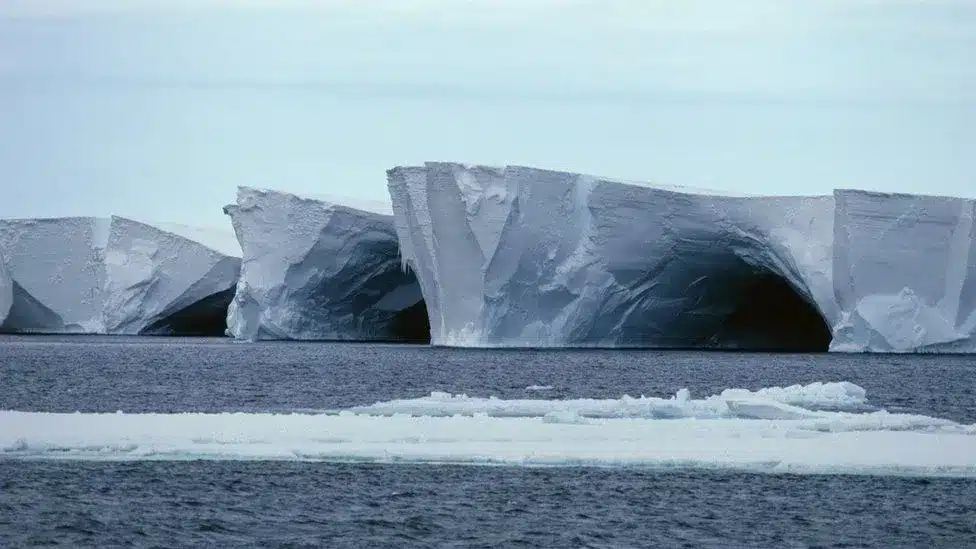About Ross Ice Shelf:
- Location: It is the largest ice shelf of Antarctica.
- It is situated in the Ross Sea, extending off the continent’s coast into the ocean.
- It is the world’s largest floating body of ice, covering approximately 487,000 square kilometres, about the size of France.
- Only ten percent of the ice shelf is visible, with the majority hidden in several hundred metres of ice below the surface.
- Thickness: Its thickness varies significantly, ranging from about 100 meters to several hundred meters. The thickest parts are generally found where the shelf anchors against the continent.
- Formation:
- It is formed by the accumulation and compaction of snow, which, over time, turns into ice.
- It is being fed a constant flow of ice from glaciersdrainingfrom both the East and West Antarctic Ice Sheets.
- As new ice is added, existing ice is being removed through melting at the base and ice calving at the front.
- It plays an important role in stabilising the Antarctic ice sheet, buttressing the ice that is constantly moving over the land surface.
Key Facts about Ross Sea:
- It is a giant bay just 320 kms from the South Pole.
- The sea is remote and positioned south and slightly east of New Zealand.
- It is the largest polar marine ecosystem in the world.
- The Ross Sea is relatively shallow, and it accounts for an area of approximately 960,000 square km (370,000 square miles).
- A large portion of the sea is covered by the Ross Ice Shelf.
- It is strongly influenced by the coastal East-Wind Drift that sets up a vast clockwise gyre accompanied by deep water upwelling.
- It is the first protected area in Antarctica and home to most of the world’s penguins and many species of whale.
Numerous scientific research stations are located along its coasts.
Q1: What is a Glacier?
A glacier is a large, perennial accumulation of crystalline ice, snow, rock, sediment, and often liquid water that originates on land and moves down slope under the influence of its own weight and gravity.
Source: Antarctica’s France-Sized Ice Shelf Makes Daily Jumps, Raising Icequake Concern
Last updated on June, 2025
→ UPSC Notification 2025 was released on 22nd January 2025.
→ UPSC Prelims Result 2025 is out now for the CSE held on 25 May 2025.
→ UPSC Prelims Question Paper 2025 and Unofficial Prelims Answer Key 2025 are available now.
→ UPSC Calendar 2026 is released on 15th May, 2025.
→ The UPSC Vacancy 2025 were released 1129, out of which 979 were for UPSC CSE and remaining 150 are for UPSC IFoS.
→ UPSC Mains 2025 will be conducted on 22nd August 2025.
→ UPSC Prelims 2026 will be conducted on 24th May, 2026 & UPSC Mains 2026 will be conducted on 21st August 2026.
→ The UPSC Selection Process is of 3 stages-Prelims, Mains and Interview.
→ UPSC Result 2024 is released with latest UPSC Marksheet 2024. Check Now!
→ UPSC Toppers List 2024 is released now. Shakti Dubey is UPSC AIR 1 2024 Topper.
→ Also check Best IAS Coaching in Delhi
























